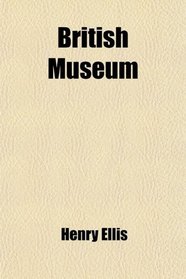Search -
British Museum
British Museum
Author:
Purchase of this book includes free trial access to www.million-books.com where you can read more than a million books for free. This is an OCR edition with typos. Excerpt from book: Chapter XII. BRACKETS, AND SUPPORTS OF TRIPOD TABLES. Room II, No. 15. A Bracket or Support of marble, rather more than three feet in height, formed by a d... more »
Author:
Purchase of this book includes free trial access to www.million-books.com where you can read more than a million books for free. This is an OCR edition with typos. Excerpt from book: Chapter XII. BRACKETS, AND SUPPORTS OF TRIPOD TABLES. Room II, No. 15. A Bracket or Support of marble, rather more than three feet in height, formed by a d... more »
ISBN-13: 9780217181693
ISBN-10: 0217181694
Publication Date: 8/9/2009
Pages: 276
Rating: ?
ISBN-10: 0217181694
Publication Date: 8/9/2009
Pages: 276
Rating: ?
0 stars, based on 0 rating




